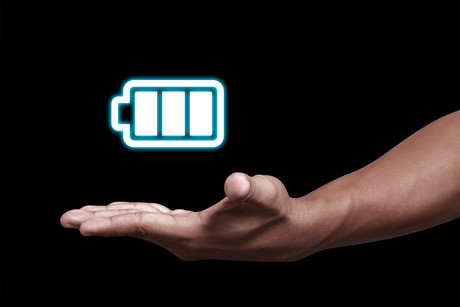Increased energy density for supercapacitors

Researchers from the Universities of Surrey and Bristol have achieved impressive energy density in supercapacitors, following the development of novel polymer materials, in work that could ultimately challenge the dominance of lithium-ion batteries.
Supercapacitors store energy using electrodes and electrolytes and both charge and deliver energy quickly, while conventional batteries perform the same task in a much slower, more sustained way. Supercapacitors also have the ability to charge and discharge rapidly over very large numbers of cycles. However, because existing supercapacitors have poor energy density per kilogram (currently around 1/20th of existing battery technology), they have been unable to compete with conventional battery energy storage. As a result, they need to be recharged frequently.
One year ago, the university partners announced the development of novel polymer materials that have dielectric properties 1000 to 10,000 times greater than existing electrolytes (electrical conductors). These findings have now been converted into device-scale technical demonstrations, with the researchers achieving practical capacitance values of up to 4 F/cm2 on smooth low-cost metal foil electrodes. Existing supercapacitors on the market typically reach 0.3 F/cm2, depending on complex extended surface electrodes.
More significantly, the researchers managed to achieve results of 11-20 F/cm2 when the polymers were used with specially treated stainless steel electrodes. If these values of capacitance can be achieved in production, it could potentially see supercapacitors achieving energy densities of up to 180 Wh/kg — greater than lithium-ion batteries.
Based on these results, the company behind the technology, Superdielectrics, is now looking to build a research and low-volume production centre. If successful in production, the material could be used as a battery in future mobile devices and even in refuelling stations for electric cars.
“Following the unveiling of the preliminary results at the first press conference just 14 months ago, the team has worked hard to increase the storage capability of these innovative materials still further,” said Dr Ian Hamerton from the University of Bristol. “Our foremost challenge is now to translate these scientific findings into robust engineered devices and unlock their revolutionary potential.”
“The present work, if it can be translated into production, promises to make rapid charging possible for electric vehicles, as well as offering a much-needed low-cost method of storing the transient output from renewable energy systems,” added Dr Donald Highgate, director of research for Superdielectrics and an alumnus of the University of Surrey.
“Wind, wave and solar energy is available but it is intermittent and, without storage, cannot be relied upon to meet our energy needs. This new work would transform the energy system which underpins our entire way of life — it is the necessary development before we and our children can have a genuinely sustainable, environmentally safe energy supply.”
“These results are extremely exciting and it is hard to believe that we have come so far in such a short time,” concluded Dr Brendan Howlin, a senior lecturer at the University of Surrey. “We could be at the start of a new chapter in the technology of low-cost electrical energy storage that could shape the future of industry and society for many years to come.”
Light-controlled ferroelectrics for future electronics
Researchers have discovered a way to manipulate the properties of ferroelectric materials quickly...
Supercapacitor tech outperforms batteries in power delivery
Engineers from Monash University have created a carbon-based material which allows...
Computer hardware advance solves optimisation challenges
A new hardware advance could redefine how industries solve large-scale optimisation challenges,...








